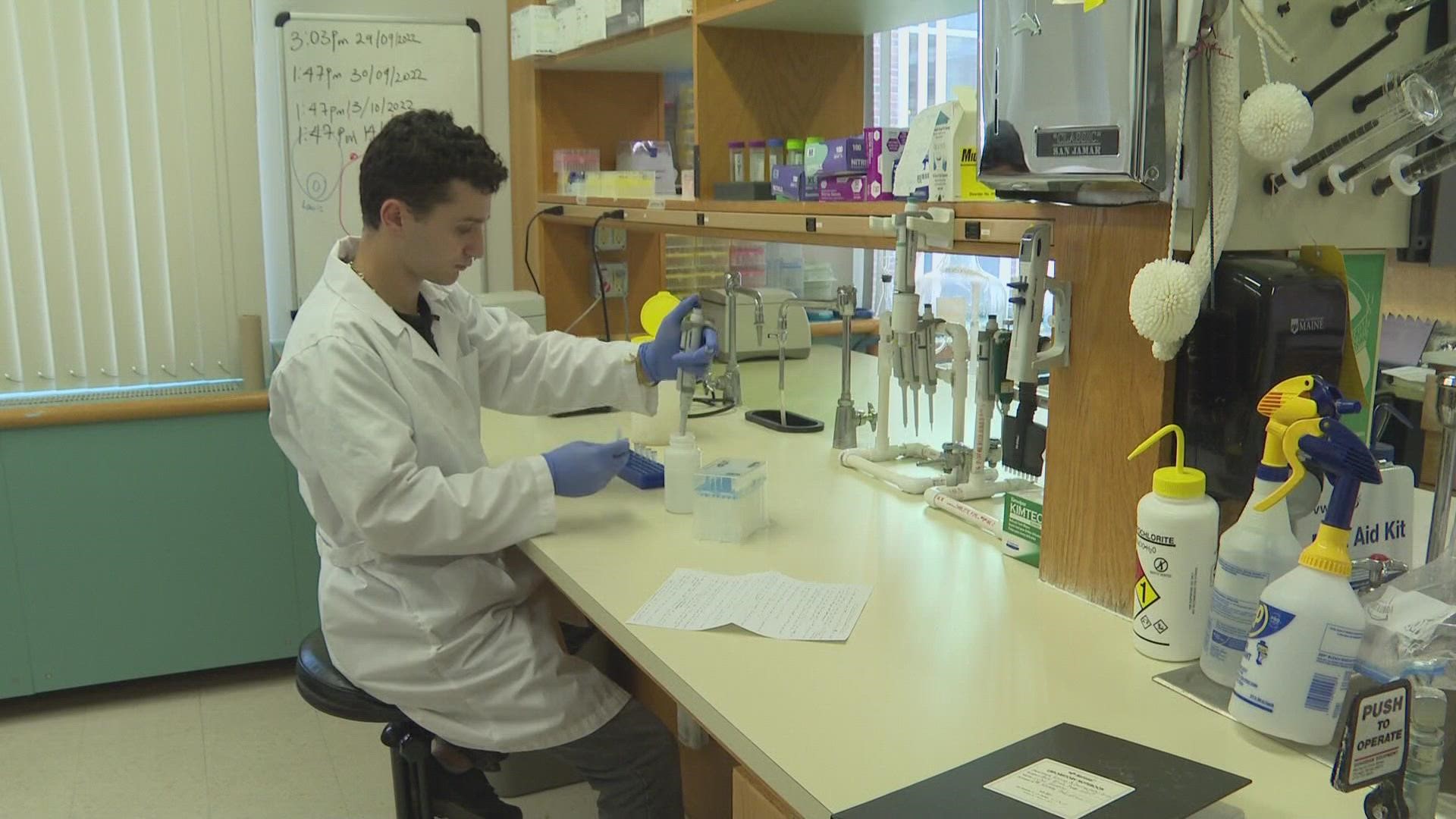BEDDINGTON, Maine — Normally when in undergraduate studies, students are trying out new things. A new major, friend groups, clubs, or even a new city.
But for University of Maine undergrad Luke Goldman, the new thing for him, as of late, is a new form of biological research.
That new research, according to Goldman, can help study recovery for forests impacted by the effects of pollution and climate change.
Goldman has been using a method of DNA extraction called eDNA, or environmental DNA.
eDNA is where you take a sample of the environment; soil or seawater, for example. You then take that sample and, through a series of machinery and solutions, extract the DNA of different organisms that have lived there.
This could be a moose that shed hair in that sample of soil, a mushroom that grew there, or a small organism that was swimming in seawater. Any of that, which contains cells, will be noticed by the method known as eDNA.
Goldman is using this method to study a region called Bear Brook in Washington County, just outside Beddington, Maine. The Bear Brook region was purposely polluted by scientists since the 1980s, according to Goldman.
And now, six years after the purposeful pollution, Goldman hopes to study the rate of recovery in the forest by looking at what kind of life is existing there.
“eDNA has only really become a field in the last 10 to 12 years, we’re really only scratching the surface of this new tool,” Goldman said.
Goldman said this research could help farmers understand how quickly their soil can recover after certain agricultural practices.
“It means soil that has been degraded through irresponsible farming practices would have the ability to rebound quickly … It would mean that damage that has been done is reversible,” Goldman said.
On a cool September day, Goldman and his colleague, Dami Kolawole, set out to take eDNA samples of the soil in Bear Brook.
Six years ago, when scientists purposely polluted Bear Brook, they injected nitrogen into the soil. This, at face value, is good for a tree’s root system. But in normal circumstances, a tree will be taking nitrogen from fungi that grow along the tree root system. In turn, the trees will give that fungi carbon in the form of glucose, while the fungi will give the tree nitrogen.
The carbon-turned-glucose will then stay with the fungi underground for the foreseeable future, helping the trees act more like a carbon sink, aiding in the reduction of greenhouse gasses.
But the scientists pumping the ground with nitrogen years ago and ruining the symbiotic relationship between the trees and the fungi simulates what happens in agricultural settings. Goldman said synthetic fertilizers can also pump soil with nitrogen.
Goldman and Kolawole are taking samples to see how much the soil has changed in those six years since the nitrogen saturation stopped.
Climbing up the Bear Brook region for an hour, uphill and over mud, the two undergrad students are out of breath.
Finally, making it to their locations, the two shovel samples of the soil.
“Hopefully the soil rebounds,” Goldman said. “If we ever do decide to rid away with synthetic fertilizer, we have the ability to do that today instead of waiting for the soil to recover.”
The two spend about eight hours sampling the soil and putting it into sterile bags.
Once back at UMaine in Orono, Goldman will take the DNA out of those soil samples to see if the fungus exists again, a sign of recovery from the once-polluted forests, and a sign of hope for farmers dependent on certain fertilizers.
And in a changing climate where increasing extremes of rain and drought will plague farmers, they need all the help they can get.

